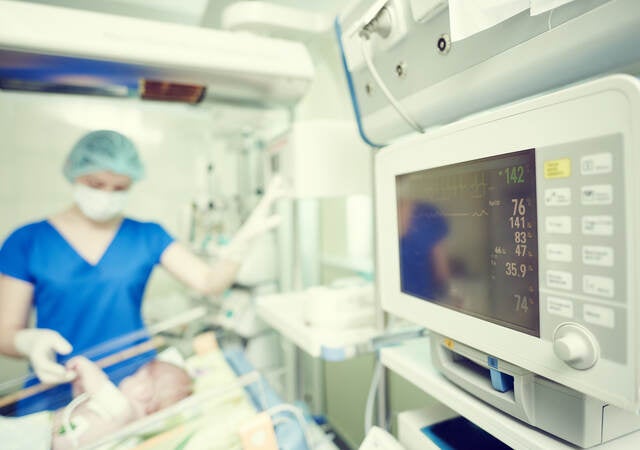May 7, 2024
By Sarah Fitzgerald
Emergo by UL is proud to have had one of our senior consultants attend the MedCon Conference in Columbus, Ohio on April 24-26, 2024. In our previous MedCon coverage, we addressed pre-market considerations. Here, we describe some of our top quality system and post-market consideration takeaways from the conference for those who were unable to make it. We encourage all regulatory professionals to consider attending next year.
Transition of Quality System Regulation (QSR) to Quality Management System Regulation (QMSR)
On January 31, 2024, the U.S. Food and Drug Administration (FDA) issued a final rule incorporating ISO 13485:2016 and definitions from 9000:2015 by reference. Until February 2, 2026, companies will be expected to comply with the QSR (the current 21 CFR 820) but starting on this date, they will be expected to comply with QMSR (21 CFR 820 amended to reference ISO 13485:2016). Many larger companies already comply with ISO 13485:2016, as that is required in most countries other than the U.S.
This transition therefore is most impactful to companies that currently only sell within the U.S. However, all companies will need to review and likely make updates to definitions throughout their QMS. The FDA noted that they expect guidance documents to be published over the course of the transition period providing best practices for this transition. FDA reiterated that they will not accept ISO 13485:2016 audits in place of their inspections.
The need for internal education within companies, especially those not already compliant to ISO 13485:2016, was discussed as being critical to a successful transition.
Medical Device Single Audit Program (MDSAP)
The FDA continues to accept MDSAP audits in place of their routine inspections, but continue to reserve the right to conduct for-cause inspections. More than 6,000 facilities have been audited in the program.
Case for Quality Voluntary Improvement Program
The FDA noted that companies that currently do not have significant problems can enroll in the Voluntary Improvement Program (VIP). In this program, a third-party first inspects a company to determine the maturity level and then works with the company and the FDA. Potential benefits include more collaboration and an improved culture throughout the company. There may also be benefits when a company applies for premarket applications (PMAs) and humanitarian device exemptions (HDEs). The FDA also noted a downward trend in recalls from participating companies. However, being in VIP requires significant investment by the company, including frequent inspections and communication. Most companies participating in VIP are using MDSAP and have one or more PMA devices.
FDA inspections
During the conference, several FDA investigators shared what they consider to be best practices.
They emphasized the importance of taking a total product life cycle (TPLC) approach, including establishing processes to feed complaints and issues back into the risk management process and determining actions based on this feedback. Investigators noted that some companies tie every relevant complaint to a specific risk in their risk assessment files so that this can be easily correlated.
FDA inspectors also highlighted the importance of having Master Validation Plans that cover products and manufacturing processes. This demonstrates that a company has considered all aspects relevant to the ultimate performance, safety and effectiveness of their products.
The FDA stressed that supplier evaluation and controls are essential but are often not as robust as they expect. For supplier evaluation, they emphasized that evaluation needs to focus on the product meeting the necessary performance, safety and effectiveness requirements. For supplier controls, they noted that contracts are often written in a manner that may lead the supplier and the company to interpret them differently, which can lead to problems. Many companies require a supplier to obtain approval before making a change to the product, but the company may consider this to include manufacturing processes (which may need to be validated) while the supplier may consider manufacturing processes not to be specific to a product. Agreements on the responsibilities should be as detailed as necessary to support adequate evaluation of all changes that could affect the performance, safety or effectiveness of the product prior to implementation.
FDA inspectors are now routinely asking about Unique Device Identification (UDI) and for evidence that UDI has been appropriately entered into the Global Unique Device Identification Database (GUDID).
Responding to Inspection Observations (483s), Untitled Letters, and Warning Letters
The FDA also provided recommendations on responding to Inspection Observations (often referred to as 483s as they are provided on FDA Form 483), Untitled Letters, and Warning Letters. These recommendations include:
- Respond within the recommended or required timeframe.
- The FDA does not generally expect that everything will be able to be completed in the response timeframe, but they do expect that a plan will have been formulated and that timeframes to address concerns is provided.
- Base plans on what has been determined the root cause(s) of the problems using your current processes.
- Try not to miss timelines. If a timeline is going to be missed, communicate proactively with the FDA and include justification on why this is acceptable based on risk.
- If resources do not allow everything to be worked on at once, prioritize those most critical from a safety and/or effectiveness standpoint first.
- Consider containment activities, such as halting shipping or conducting recalls.
- It may be beneficial to request a meeting with the FDA.
- If there is a major disagreement or disconnect that doesn’t seem to be improving with standard communication, you may consider reaching out to Ombudsman. Ombudsman are independent and can help mediate and discuss options to move forward.
Sterilization, Ethylene Oxide (EO), and the Environmental Protection Agency (EPA)
Approximately half of sterile medical devices use EO sterilization. With the EPA’s rule to reduce EO emissions, there is significant concern on mitigating the risk of shortages of sterile medical devices in the U.S. FDA expects that revalidation for many products will be necessary for sterilization companies to meet EPA requirements. The FDA highlighted their Sterilization Master File Pilot Programs for PMA and 510(k) devices to help companies move away from EO sterilization in an efficient manner.
Concluding Remarks
MedCon 2024 was highly educational, providing the opportunity to learn, collaborate and network. Please reach out to us if you have any questions on key takeaways or would like to discuss how we can assist you in bringing your device to the market.
Request more information from our specialists
Thanks for your interest in our products and services. Let's collect some information so we can connect you with the right person.






